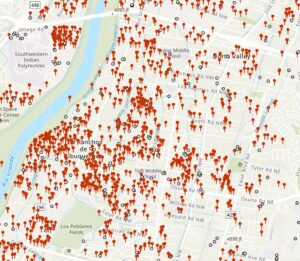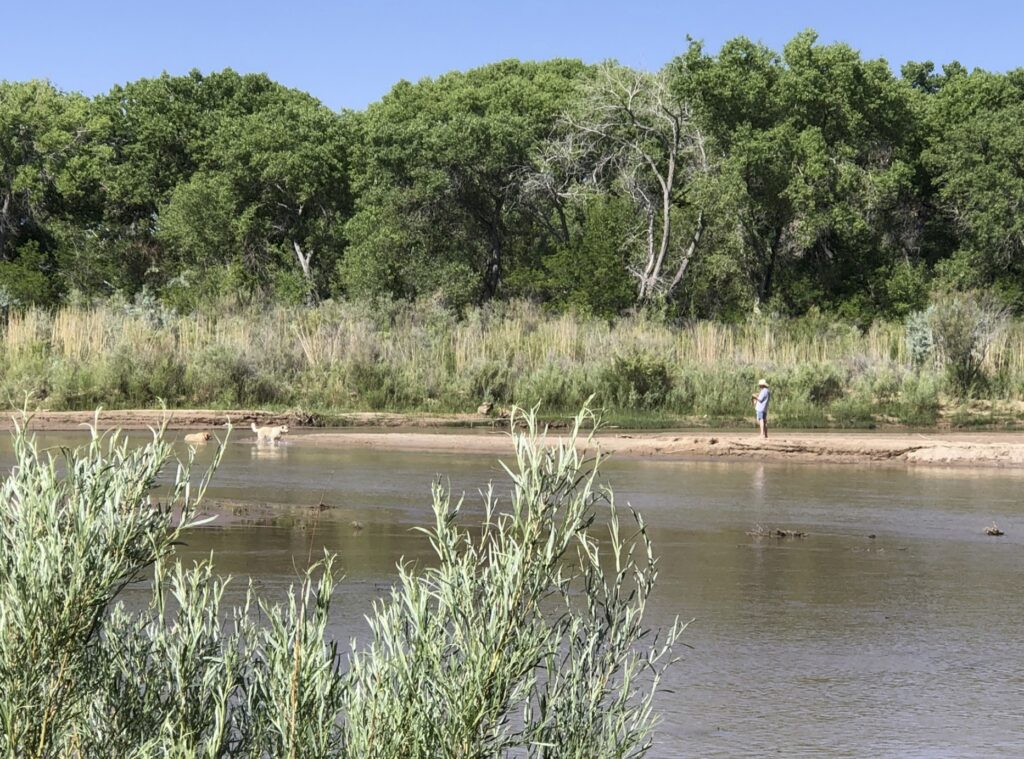
The Duranes ditch, dry this morning (June 6, 2022)
Sometime last weekend (June 4-5, 2022), the Rio Grande south of Socorro, New Mexico, began drying. By this morning (Monday June 6) river managers reported 20+ miles of drying. The gage north of the 380 bridge at San Antonio dropped to zero today.
The Albuquerque Bernalillo County Water Utility Authority, which normally gets the largest share of our drinking water from the Rio Grande (supplemented with imported Colorado River water via the San Juan-Chama Project), will likely be shutting down its river diversions within the next week to ten days, switching entirely to groundwater through late summer or fall. Which means my tap will still run, and I’ll still be able to water my lush suburban oasis cactus.
Flows on the Rio Grande through Albuquerque right now are the lowest since 1977, which was a crazy bad water year here. Absent a good summer monsoon (which bailed us out last year), we’re expecting the Rio Grande to dry in the Albuquerque stretch this year. As I understand it, this would be the first time we have seen that since 1983, though historically it has happened with some frequency in the past.
But it’s never happened since I’ve been here. (I hope readers will forgive a post now and then as I bear witness to my river going dry.)
Folks who depend on surface water for irrigating their yards, horse pastures, and the like are likely to see dry ditches like the one you see above – the Duranes, which was dry today when I rode through the neighborhood on my morning bike ride.

Domestic wells on the valley floor
Folks with domestic wells to water their yards on the valley floor – and there are a lot of them, especially in the more affluent neighborhoods – should be OK. (Forgive my modest cartographic skills, the red push pins are locations with a domestic well permit, allowing them to pump from the shallow aquifer to water their yards.)
The endangered Rio Grande silvery minnow isn’t doing well at all this year. Surveys have found almost no eggs, suggesting spawning barely happened this spring.
One of the things I’ll be watching this year is the health of our bosque, the cottonwood gallery forest that lines the river. The trees are phreatophytes, which means they stick their roots down into the water table to drink directly. Even as the river dries, they’re still able to tap into the shallow aquifer, and we’ve seen them do well in recent years even as the surface manifestation of the river dries. It’s almost like under a nature-drive doctrine of prior appropriation, the trees are the senior users on the system. They’ll continue to take their cut.
This morning, out on the river just south of Albuquerque’s Central Avenue Bridge (Route 66), I saw this guy with two very old dogs slowly but happily splashing. When the flows get low like this, you see that a lot. So I guess there’s that.

Happy dogs, splashing in a river
